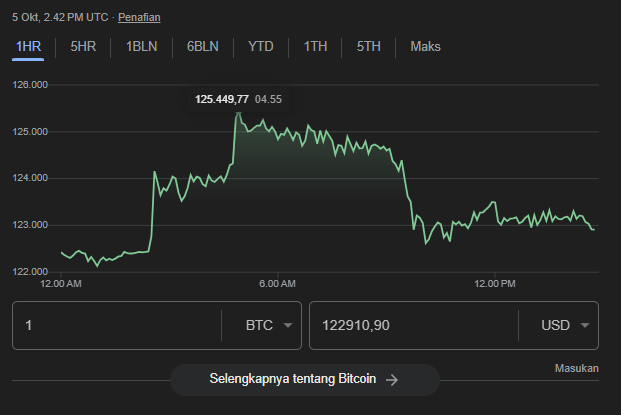If you’ve ever wondered how China went from a struggling, closed-off economy in the 1970s to one of the richest and most powerful countries in the world today you’re not alone. The rise of China is one of the most fascinating economic transformations in modern history.
But how did it happen? How did a country once known for poverty and isolation become a global superpower in just a few decades?
Let’s break it down in a friendly, easy-to-understand way.
List Of Content :
1. Economic Reforms: It All Started with “Opening Up”

The turning point for China was in 1978, when Deng Xiaoping introduced a series of economic reforms under a policy known as “Reform and Opening Up.”
Before this, China had a strict communist economy where everything was controlled by the state. There was little room for private business, foreign investment, or trade.
But Deng’s reforms changed the game. China began:
- Allowing private businesses to operate
- Opening up to foreign investment
- Encouraging exports and international trade
- Creating Special Economic Zones (like Shenzhen) with low taxes and relaxed regulations
This shift gave Chinese people the freedom to innovate, build businesses, and engage with the global market for the first time in decades.
2. China Became the “Factory of the World”
By the 1990s and 2000s, China had fully embraced its role as the world’s manufacturing hub.
Why was it so attractive to global companies?
- Cheap labor: Wages were much lower than in Western countries
- Huge workforce: Millions of people were ready and willing to work in factories
- Strong infrastructure: China invested heavily in roads, ports, and railways
- Business-friendly policies: Low taxes, fewer regulations, and support for exports
As a result, companies like Apple, Nike, and countless others moved their manufacturing to China. This brought in billions of dollars in foreign capital, created millions of jobs, and boosted China’s GDP at an incredible pace.
3. Export-Led Growth Fueled the Boom
One of the smartest strategies China used was focusing on exports. Instead of just producing for its own market, China produced for the world.
Everything from electronics and furniture to clothing and toys had a “Made in China” label.
By keeping its currency low and offering competitive prices, China dominated global trade. This massive flow of export revenue allowed the country to accumulate foreign exchange reserves and reinvest in development.
Read more :
5 Exercises to Keep Your Body Healthy and Fit Every Day
4. Massive Infrastructure Investment
China didn’t just sit on its profits it spent them on infrastructure.
Over the past few decades, China has built:
- The world’s largest high-speed rail network
- Dozens of modern airports
- New megacities and smart cities
- Advanced power grids, ports, and highways
This not only created jobs but also made it easier for goods and people to move across the country. Efficient infrastructure gave China a huge advantage in both domestic and international business.
5. Strong Government Planning and Control
Unlike some Western countries with free-market chaos, China’s government takes a centralized, strategic approach to economic growth.
They create Five-Year Plans that outline specific goals for development, technology, urbanization, and industry. These plans are then executed with impressive precision.
The Chinese Communist Party may not be democratic in the Western sense, but it has proven extremely effective at driving long-term growth by:
- Supporting key industries (like tech and green energy)
- Directing investment where it’s needed
- Ensuring political and economic stability
This centralized control helped China avoid some of the pitfalls that other developing nations faced.
Read more :
India vs Pakistan: The Never-Ending Rival In South Asia
6. Education and a Skilled Workforce
Another secret weapon behind China’s growth? Education.
The country has invested heavily in:
- STEM education (Science, Technology, Engineering, and Math)
- Vocational training
- University research and development
As a result, China now produces millions of graduates every year, many in high-tech fields. This educated workforce powers innovation and attracts tech companies.
Today, cities like Shenzhen and Hangzhou are known as China’s Silicon Valley equivalents home to global giants like Huawei, Tencent, and Alibaba.
7. Rapid Urbanization and a Growing Middle Class
Over 800 million people have moved from rural areas into cities in China since the 1980s. That’s the largest human migration in history.
This urbanization has:
- Created massive consumer markets
- Boosted demand for housing, transportation, and goods
- Led to the rise of a middle class with disposable income
With more people working in cities, buying homes, driving cars, and spending money, China’s economy diversified from just manufacturing to include services, retail, and tech.
8. Tech Innovation and Digital Economy
In the last 10–15 years, China has shifted from just “copying” foreign tech to leading innovation.
Examples?
- WeChat became a super-app before the West even thought about combining messaging and payments.
- Alibaba’s Singles Day is the biggest online shopping event in the world.
- BYD and NIO are challenging Tesla in the electric vehicle market.
China is also investing in AI, robotics, green energy, and 5G, aiming to dominate the next generation of global technology.
Read more :
Mexico’s 2024 Election Crisis With Cartel Violence and the Assassination of Public Officials
9. A Global Vision: Belt and Road Initiative
China isn’t just focused on its own borders. Through the Belt and Road Initiative (BRI), China is investing in infrastructure projects around the world from Asia and Africa to Europe and Latin America.
By building roads, ports, and railways abroad, China is:
- Expanding its influence
- Creating new trade routes
- Strengthening ties with developing nations
This global outreach helps sustain long-term growth while securing China’s place as a dominant global force.
So, What’s the Takeaway?
China’s wealth didn’t happen by accident. It was the result of bold reforms, strategic planning, hard work, and global vision.
From opening its economy and welcoming foreign businesses, to educating its people and investing in innovation China has played its cards incredibly well.
Of course, challenges remain: income inequality, an aging population, real estate bubbles, and geopolitical tensions. But looking at the past 40 years, one thing is clear:
China’s rapid rise is one of the most remarkable success stories in modern economic history.
Sources:
- World Economic Forum – How China became an economic powerhouse
- BBC – China profile: Timeline
- Harvard Business Review – What the West Can Learn From China’s Innovation Playbook
- Investopedia – How China Became the World’s Factory
- Brookings Institution – China’s long game: Why it’s dominating the global economy



Good partner program https://shorturl.fm/m8ueY
https://shorturl.fm/6539m
My developer is trying to convince me to move to .net from PHP. I have always disliked the idea because of the costs. But he’s tryiong none the less. I’ve been using Movable-type on several websites for about a year and am concerned about switching to another platform. I have heard fantastic things about blogengine.net. Is there a way I can import all my wordpress posts into it? Any help would be really appreciated!
Good shout.
Tried these https://joyorganics.com/collections/cbd-gummies in preference to bed a scarcely any times in the present circumstances and they actually work. I’m mostly tossing and turning, but with these I end up falling asleep technique quicker. No bizarre hangover feeling in the morning either. Kinda dear, but bluntly worth it when I very recently thirst for a wholesome night’s sleep.